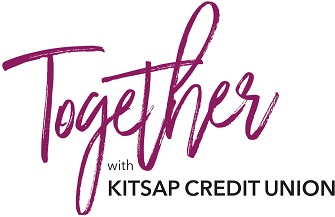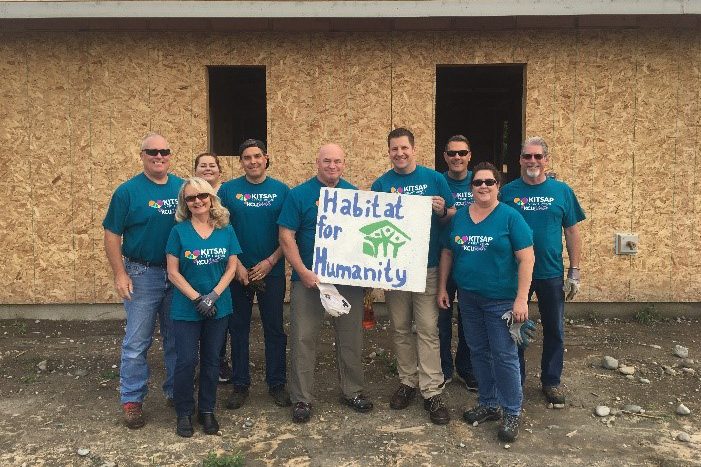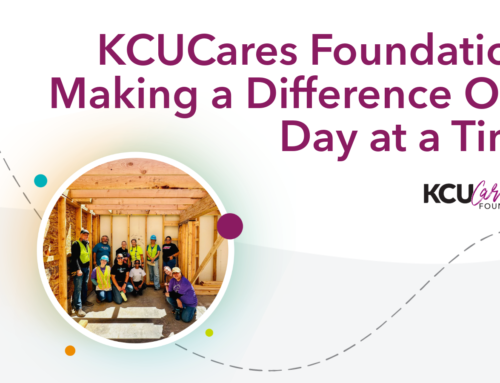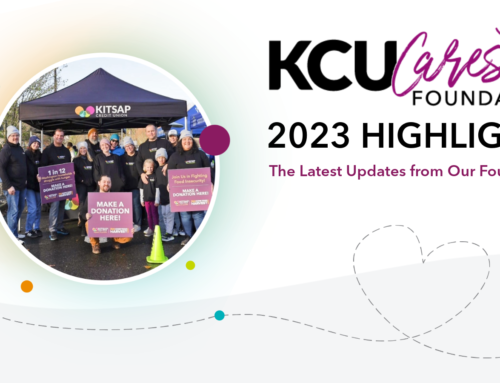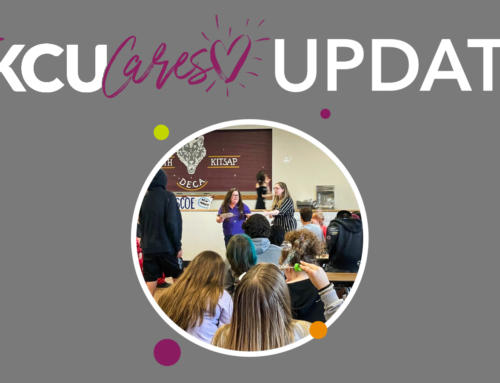Habitat for Humanity of Kitsap County’s mission is to help families in Kitsap County build strength, stability, and self-reliance through affordable home ownership.
Staff: Jack Geiger (KCU Marketing), Cathy Brorson (KCU Marketing), Tom Shannon (KCU Marketing), Kyle Burke (East Bremerton Branch), Maeghan Souza (Puyallup Branch), Mike Williams (KCU Business Services), David Casseday (KCU Commerical Lending), Dick Barnes (KCU Commercial Lending), and Connie Rouse (Naval Base Kitsap – Bremerton Branch).
What better way to spend a day than supporting a charity that’s putting roofs over families’ heads? We did just that, spending a day volunteering at a Habitat for Humanity job site.
The Organization
Habitat for Humanity, a national organization with a local focus, helps local families have a decent, safe and affordable place to call home. Many of these are single parent households. Potential homeowners are first screened. Once approved, they must provide a $1,000 down payment and invest a minimum of 200 hours of sweat equity into the construction of their new home. Although they also must qualify for a mortgage, their payment will never exceed 30% of their income. Habitat for Humanity bridges that financial gap with government grants and public and private donations.
The People
In all, nine #KCUCares team members volunteered their time for service that day. They ranged from front line staff, branch managers and headquarters staff. Our day was guided by an experienced home builder named Guy, who showed great patience with the wide range of skills levels (and lack thereof) of our group.



The Day
We arrived at the work site on a pleasant August morning. The required clothing list contained items most people have in their closet: attire appropriate for spending the day outside, foot wear that covers the toes (boots preferred), work gloves, and heavy pants (jeans were fine, just not your best pair).The job site consisted of ten or so Habitat for Humanity houses in a variety of stages of completion. The land for the soon-to-be neighborhood was donated by the owner of the adjoining mobile home park. He had completed the utilities for mobile homes, then changed his mind and donated it to Habitat for Humanity.
Our first charge was to clean the job site. If you’ve done any home repair, you know how quickly scraps accumulate. The carpenters spend their time cutting and assembling, so the area around the houses was liberally littered with end cuts from 2x4s, plywood sheets, and siding. This debris needed to be picked up and sorted into recycling, garbage or scraps large enough to be re-used. While not glamorous, the site clean-up was a necessary task that needed to be completed. Next week, a bulldozer is scheduled to level the yards and back fill the utility ditches. They can’t do that on a lot covered with wood scraps.
Once the cleanup was completed, we spent the remainder of the day preparing the concrete forms that will soon shape one of the home’s foundation’s footings. Although the forms were already roughed out, they needed to be leveled and secured to the ground. Securing the forms required hammering a couple hundred 30-inch iron stakes into the ground, and then securing the stakes to the wooden forms with nails. The final task for the day was nailing brackets onto the footings that will soon hold the foundation forms.
The Takeaway
In all, it was a day full of accomplishments. While the tasks we performed did not take construction experience, they were very necessary in the construction process. I’m sure that tomorrow morning we’ll be discovering muscles in our arms and back that we didn’t know existed, but it will all be worth it. A local family is now one day closer to having a home. We were very impressed by Habitat for Humanity’s professionalism, mission and organization of the event, and would recommend spending a day volunteering on the home site to anyone.
